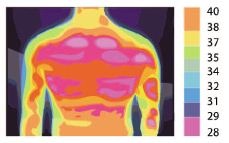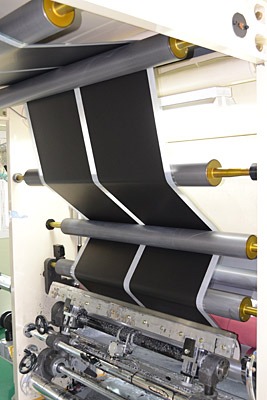Grindinio šildymo elektra technologija

Infraraudonųjų spindulių plėvelės gamybos būdas
Gamyba prasideda nuo plonos pagrindo plėvelės formavimo, kuri išgaunama sintetinant polietileno (PE) ir polietilentereftalato laminato (PET) medžiagas. Viso plėvelės ruošimo proceso metu kontroliuojamas plėvelės storis.
Ant plėvelės pagrindo, atsižvelgiant į gaminio elektros grandinės schemos elementus, specialia tikslia įranga purškiama anglies pluoštu prisotinta pasta, iš kurios suformuojama tolygi, didelio tankio anglies dalelių danga, kuri, veikiama plėvelės elektrine grandine tekančios elektros srovės, geba spinduliuoti pastovų infraraudonųjų spindulių, t.y. šilumos, srautą. Anglies dalelės yra sintetintos su polietileno danga, kad užtikrintų vientisą ir tikslų pagrindo padengimą aukštai šildymo kokybei pasiekti. Ištobulinti dangų klojimo technologiniai procesai gamybos metu leidžia išvengti šilumos sankaupų. Procesas reikalauja labai tikslių parametrų išlaikymo, klojama danga yra mažesnio nei 1 mikrometras storio.

Elektros grandinės izoliacijai, apsaugai nuo drėgmės ir paviršiaus pažeidimų naudojamas šiuolaikinio techninio lygio laminavimo procesas.
Jeigu produktas atitinka nustatytus kokybės parametrus, plėvelės turi būti sutvirtinamos. Po 72 valandų terminio apdorojimo prie 70 ºC, anglies pluoštas dar labiau prilipdomas prie pagrindo, o šildymo plėvelė tampa pusiau stabili ir tinkama kirpti žirklėmis.
Šilumą teikianti infraraudonųjų spindulių plėvelė pasižymi į aplinką atiduodamos šilumos stabilumu ir yra atspari ugniai.
Šildymo sistemų palyginimas dėl eksploatacijos ir poveikio
